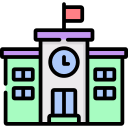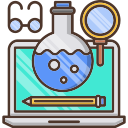The start of a new school year is a fresh opportunity to set the tone for an organized, efficient, and engaging classroom environment. As a secondary science teacher, your classroom is more than desks and lab tables—it’s a hub for exploration, discovery, and learning. With so many moving parts, developing effective classroom systems and setting up thoughtfully designed stations in your classroom can make all the difference in creating a space that runs smoothly, every day, and especially on busy lab days.
Whether you’re a seasoned educator or stepping into your first classroom, this guide will walk you through essential classroom systems and stations to empower you to launch your school year with confidence. From managing student movement to organizing supplies, these strategies are designed to save time, reduce stress, and keep your focus on what matters most—your students.
Why Classroom Systems and Stations Matter
Imagine this: It’s lab day, and students are setting up experiments. Without clear classroom systems or designated stations, chaos erupts—students crowd around supplies, no one knows where to turn in work, and valuable time is wasted. Sound familiar? That’s why investing in classroom systems and stations is so important for science classrooms.
Classroom systems and stations give your classroom structure. They reduce inefficiencies, eliminate confusion, and transfer the responsibility for learning from you to your students. By setting up routines and designated spaces, you’re not just keeping things organized—you’re creating an environment where students feel confident and capable. And the best part? These classroom systems work for you too, cutting down on repetitive questions and time spent managing day-to-day logistics.
Essential Classroom Systems for Secondary Science
Strong classroom systems are the backbone of a well-run classroom. Here are the foundational classroom systems you’ll want to prioritize:
1. Entering the Classroom and Attendance
Establish a clear routine for how students will enter your classroom. For example:
- Greet students at the door with a warm welcome.
- Have a designated area where they can pick up any materials they’ll need for the day.
- Use a quick attendance tool, such as a seating chart or online check-in.
Consistency here sets the tone for the entire class period!
2. Absent Work/Student Absences
We’ve all experienced the dreaded, “What did I miss?” question from students, sometimes eight times in a row. It can be frustrating and time-consuming to constantly repeat instructions or track down missed materials. To cut through the confusion, try implementing a simple absent work system.
Create an “Absent Work” bin, use hanging file folders, or set up a digital folder where all missed assignments, handouts, and notes can be stored. This allows students to pick up the materials they missed independently, without needing to ask for help repeatedly.
To make the process even smoother, post clear reminders on your classroom board or learning platform explaining how the system works and where to find the materials. This not only saves you time but also gives your students the responsibility for catching up on their own.
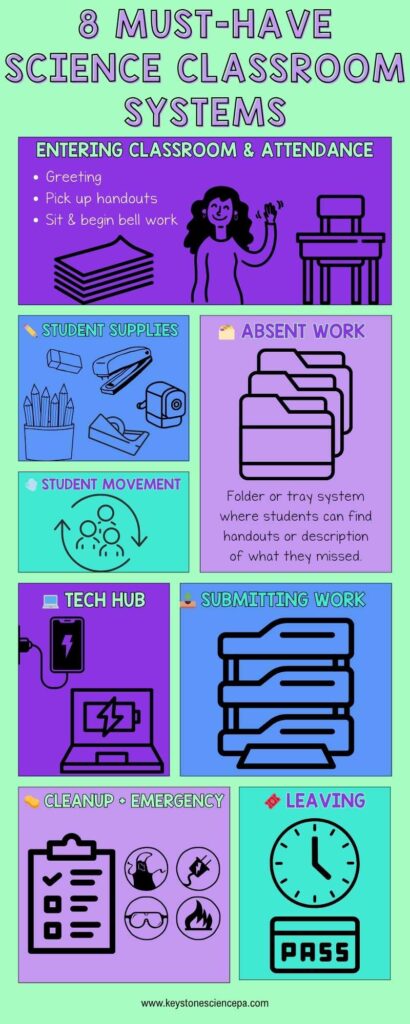
3. Technology Hub
Keep student devices organized with a clear Technology Hub:
- Set up storage bins or charging stations labeled by number or name for tablets or laptops.
- Include a sign-out sheet if students borrow devices.
- Establish rules for care and use, reinforcing them early on.
4. Student Supplies
Equip a Student Supply Station with commonly forgotten items such as pencils, paper, erasers, scissors, and rulers to ensure students have access to the tools they need to succeed. Place the station in an accessible, central location in the classroom, making it easy for students to grab what they require without disrupting the lesson.
Set clear expectations—students should only take what they need, use the items responsibly, and return them promptly after finishing. Regularly check and restock the station to keep it organized and ready for use. This simple setup encourages responsibility and helps foster a supportive learning environment.
5. Student Movement
Science classrooms often require movement between desks, lab tables, and stations. Prevent bottlenecks by setting pathways for movement:
- Create clear “laneways” between stations.
- Practice transitions with students so they know how to move efficiently.
6. Submitting Work
Label a turn-in bin for student assignments, ensuring it is placed in an easily accessible location in the classroom. Clearly communicate how and when work should be submitted, whether at the beginning of class, during transitions, or by a specific deadline. Provide reminders about the process to avoid confusion.
When returning graded work, use an organized method, such as individual student folders, designated return trays, or a specific handing-out time during class. This helps maintain a sense of structure and makes it easier for students to keep track of their progress.
7. Cleaning Up & Emergency Procedures
Teaching students how to clean lab tables and return supplies after class activities and lab experiments is key to a smooth dismissal. Post step-by-step cleanup instructions at each station. Additionally, ensure emergency procedures, such as fire drills or lab safety protocols, are reviewed early and frequently, they should also be posted and visible in the classroom.
8. Leaving the Classroom
Create a clear and consistent process for dismissing students, handling restroom or appointment passes, and addressing last-minute questions. For example, establish specific times or signals for when students can ask questions, and set clear rules on how to request passes for leaving the classroom. This helps ensure students know exactly what to do and minimizes disruptions. A well-organized system prevents students from wandering, waiting around in confusion, or interrupting the flow of the classroom.
Classroom Stations for Smooth Transitions
Stations are an essential companion to effective classroom systems. Whether permanent or temporary, they streamline transitions and create order. Here’s a list of must-have stations for your science classroom:
1. Student Supply Station
Create a well-stocked supply station to ensure students have everything they need throughout the school day. Include essentials like pencils, erasers, tape, staplers, and paper to cover basic needs. Add useful tools such as a 3-hole hole punch, scissors, rulers, and extra binders or folders for organization. You might also include turn-in bins for assignments, spare notebooks, highlighters, sticky notes, and even some art supplies like markers or colored pencils.
This station serves as the go-to spot for those “I forgot” moments, helping students stay on track without disrupting the flow of the lesson. A fully equipped supply station not only promotes independence but also keeps the classroom running smoothly. Place it near the back or side of the room to minimize disruptions and ensure easy access for all students.
2. Handout & Materials Pick Up
Establishing an efficient classroom routine can be transformative, and one of the easiest ways to streamline your mornings is by creating a dedicated station for daily materials. This simple adjustment ensures a smoother start to the day for both you and your students!
Imagine students walking in, picking up their handouts, worksheets, or instructions right at the door—no chaos, no interruptions, just a calm, purposeful start to the day. This small step can have such a big impact on keeping everyone focused and ready to learn!
While daily handouts should be easily accessible right at the entrance, consider setting up a secondary space for additional resources like project supplies or reference sheets. This keeps the main station tidy and ensures other materials are still within reach when needed.
You could use a small table or shelf near the door for your main station—somewhere students can quickly grab what they need on their way in. For the secondary storage, think creatively! Maybe along a side wall or by group workstations, so students can access those items without disrupting the flow of class. This setup not only saves time but also builds independence, keeping students informed and ready to dive into their day.
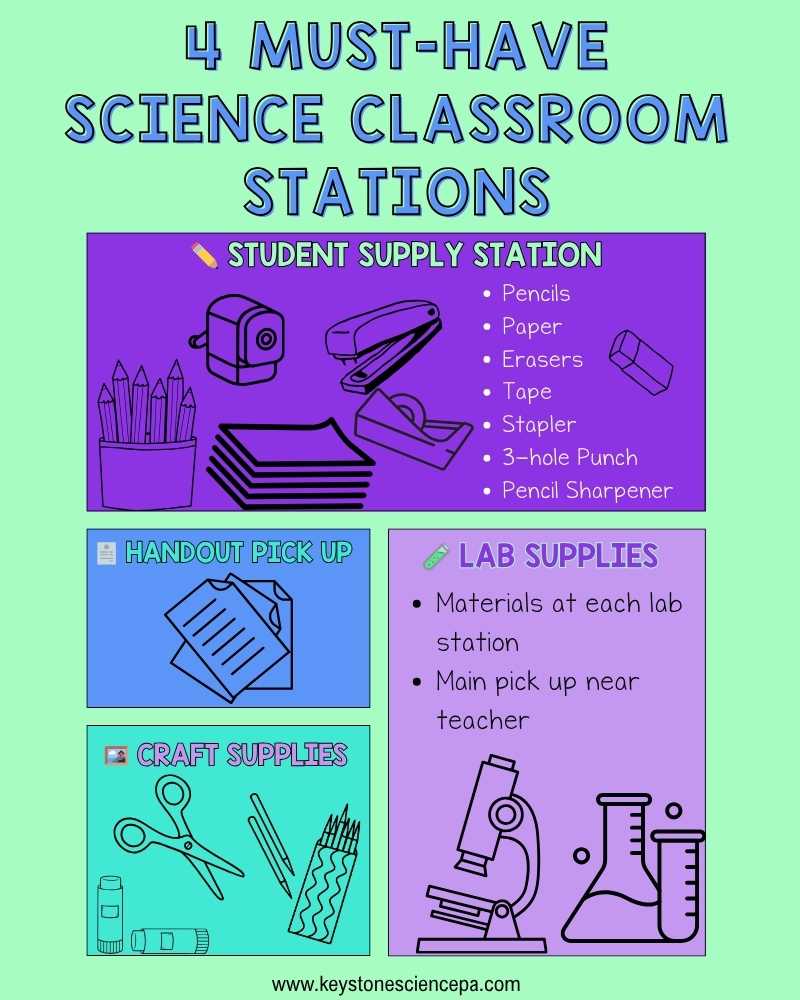
3. Craft Supply Station
For your next project or build day, make sure to have all the essentials ready to go! Stock up on markers, rulers, glue sticks, scissors, and construction paper, and organize them in a neat, accessible corner. Label bins or trays to make it easy for everyone to grab what they need without any fuss. Rotate supplies based on the activity or theme—this adds a fresh, engaging touch that sparks creativity and ensures every project has exactly what’s needed. A great spot for this station is near a large table or in the back of the classroom where students can gather easily.
4. Lab Supply Stations
On lab days, set your students up for success by creating temporary stations that are fully stocked with all the materials they’ll need for the experiment. Arrange items neatly and clearly label them, organizing by group or table to avoid crowding and keep things running smoothly.
Before diving into the experiment, take a moment to walk your students through the setup—show them where to find materials and how to return them properly after use. Not only does this keep the lab organized, but it also gives students ownership of their workspace while building great lab habits.
Consider setting up each lab station with items each group needs (containers, pipettes, Bunsen burners, etc.) and a separate station centrally located in the classroom for students to get additional items and/or chemicals they need as they complete the lab. By keeping chemicals separate, you can keep an eye them, replenish when needed, and monitor student handling of the chemicals.
Technology in Science Classrooms
Technology has the power to transform the science classroom, simplifying daily tasks and enriching special projects. However, to maximize its benefits, it must be integrated thoughtfully, alongside clear expectations and routines that promote learning while minimizing distractions. Equally important is providing students with opportunities to practice using technology appropriately (i.e. cell phones); without this foundation in school, they may struggle to navigate its use effectively in the real world.
Before you dive in, review your district and building policies on device use. With the basics in place, you can make the most of technology in a way that’s both efficient and inspiring. Here are some practical tips to help you integrate tech smoothly:
- Usage Policies: Clearly define what’s acceptable when it comes to device use—post your classroom policy where everyone can see it. If there isn’t a school-wide rule about cell phones, set clear and consistent expectations yourself. Share when and how devices should be used, and explain why these boundaries are in place. This helps your students develop digital responsibility while staying focused on learning.
- Dedicated Tools and Platforms: Make use of digital tools like Google Classroom, Schoology, or Canvas as centralized hubs for resources, assignments, calendars, and communication. These platforms let students access materials anytime, anywhere, enabling them to manage their own learning and stay organized. Walk your students through accessing and using these platforms, so everyone starts on the same page.
- Purposeful Cell Phone Integration: Cell phones can be fantastic tools for engaging students—think live polling, using educational apps, or collaborating on projects. To keep things running smoothly, clearly communicate how and when phones may be used and stress the importance of respectful, purposeful usage. With clear guidelines, cell phones become learning allies rather than distractions.
- Troubleshooting Protocols: Tech hiccups are bound to happen. Always have a backup plan, such as printed worksheets or analog alternatives, to keep the class running without missing a step.
Ultimately, when you establish clear tech procedures and reinforce them regularly, technology becomes a seamless, positive part of your classroom community. By modeling and expecting responsible use, you’re not only supporting instruction; you’re nurturing valuable digital citizenship skills and setting your students up for success in and out of the science lab!
Maintaining Classroom Systems and Stations All Year Long
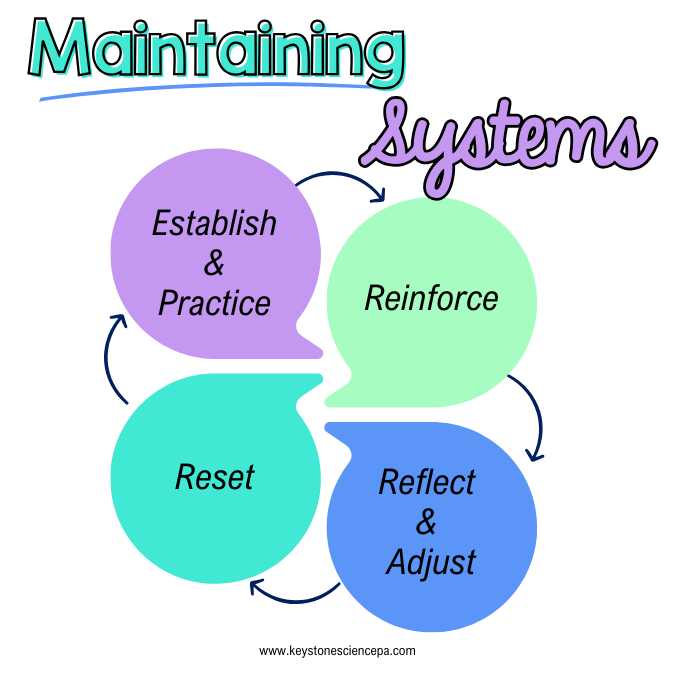
Even the best classroom systems need continual care. Here’s how to keep things running smoothly throughout the school year:
1. Establish and Practice Classroom Systems
Devote the first weeks of school to teaching, modeling, and practicing classroom systems thoroughly. Take the time to explain why these routines are important and how they help create a productive learning environment. Encourage students to ask questions and provide opportunities for them to practice these classroom systems until they become second nature.
Pro Tip: Turn routine practice into a fun challenge! For example, use a timer to see how quickly and accurately students can complete a routine, or reward the class when everyone follows a system perfectly. This keeps students engaged while reinforcing the importance of the systems.
2. Reinforce Classroom Systems
Regularly revisit rules through reminders, visuals, and quick verbal check-ins to help reinforce expectations and keep them fresh in mind. This could include posting charts, setting alarms for reminders, or taking a moment to discuss the rules during daily interactions. Positive reinforcement, such as offering genuine compliments, small rewards, or even a simple “great job,” goes a long way in encouraging and building strong, lasting habits. Celebrating progress, no matter how small, can also motivate continued effort and improvement.
Pro Tip: Reinforce expectations by using reminders, visuals, or quick check-ins daily. Post charts, set alarms, or discuss rules in casual interactions. Use the following prompts to reinforce your expectations:
- “Remember, what’s our first step when we start this activity?”
- “Can someone remind me of the rule about using the lab equipment?”
- “Let’s quickly review—what should we do if we finish early?”
- “I noticed how [Student’s Name] got started right away. Who else is ready to dive in?”
- “What’s one thing we can focus on today to keep improving?”
- “Can we set a goal for the next 10 minutes and check in after?”
3. Reflect and Adjust
After a few weeks, take some time to check in and reflect on how well your classroom systems are functioning. Identify any trouble spots that may be causing confusion or slowing things down. Think about whether certain systems could be adjusted to better suit your teaching style or the needs of your students. Consider gathering feedback from your students as well—what do they find helpful, and what might they be struggling with? Adjust your classroom systems as needed based on what’s working well and what clearly isn’t, so your classroom can continue to run efficiently and support everyone’s success.
Pro Tip: Regularly ask yourself: Are routines being followed consistently? Are there specific steps or procedures where students seem confused or disengaged? Could transitions between activities be quicker or clearer? Based on your observations, consider small tweaks like simplifying instructions, rearranging classroom materials for easier access, or adding visual aids to clarify expectations. Even small adjustments can make a big difference in creating a more efficient and supportive learning environment!
4. Reset When Needed
Classroom routines can sometimes break down, especially after periods of disruption like long breaks, challenging weeks, or unexpected schedule changes. However, a quick reset can help reestablish order and get things back on track. Take time to remind students of the importance of having clear classroom systems in place and how these routines help everyone succeed. Re-teach procedures step by step, modeling what you expect and providing opportunities for students to practice. This process not only reinforces expectations but also creates a sense of stability and structure that benefits both students and teachers alike.
Pro tip: Involve your students in the process to create buy-in. Use prompts like, “Why do you think it’s important to have clear routines in our classroom?” or “What can we all do to make sure our day runs smoothly?”
A Classroom That Runs Itself? Almost!
Setting up effective classroom systems and stations is an investment in you and your students’ success. It minimizes chaos, fosters independence, and lets you focus on the joy of teaching and learning. By establishing structure and functionality in your secondary science classroom, you’re setting the stage for engaging experiments, collaborative projects, and memorable moments.
You’ve got this—and your students are lucky to have a teacher who cares deeply about their experience. Here’s to a school year filled with smooth days, exciting labs, and students inspired by science!
Let’s Connect!
💡Feel free to explore Keystone Science for ready-to-use high school biology & ecology NGSS aligned notes and activities.
💡Subscribe to my email list for weekly tips direct to your inbox.
💡Follow me on Instagram for daily tips, motivation, and facts you can use in your classroom!
🌟Share in the comments or email me directly 👉🏻 [email protected].

